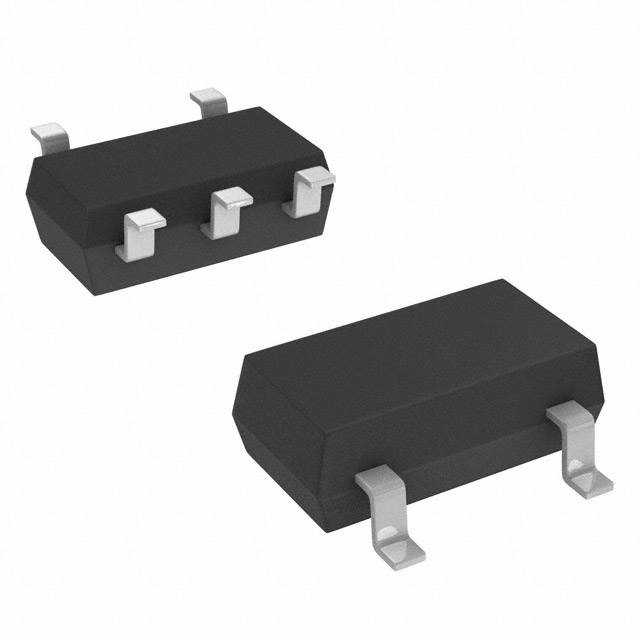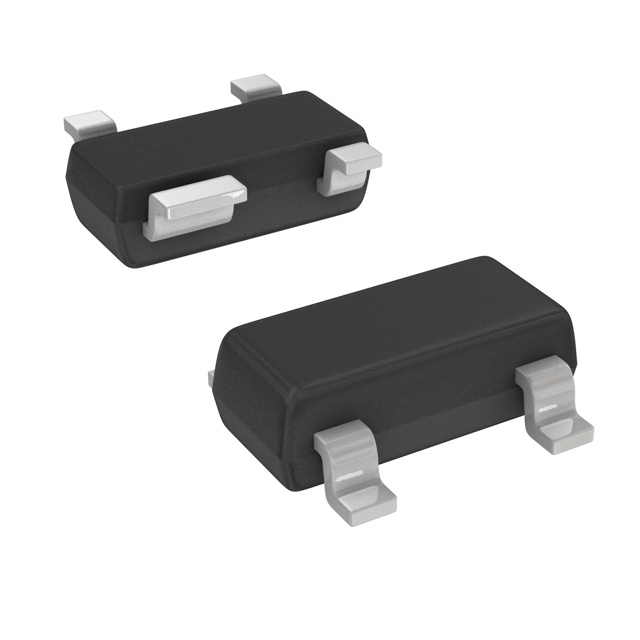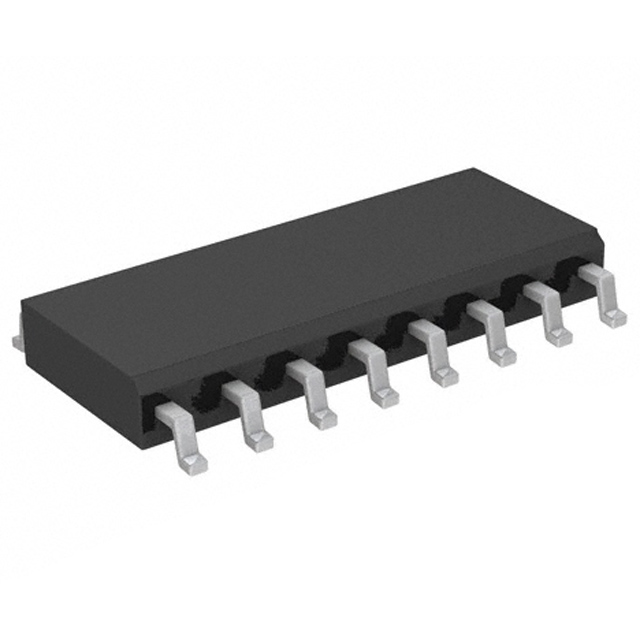

Introduction to DC to AC Converter
Catalog
What are DC and AC electricity?Why Is DC to AC Conversion Necessary?How A DC to AC Converter WorksHow Does an Inverter Convert DC to AC Power?Can All Inverters (DC to AC Inverters) Convert AC to DC if Used in Reverse?Where Can You Buy a DC to AC Converter?A DC to AC Inverter, also called a DC to AC Converter, is a must-have if you're setting up a solar power system. In this guide, we’ll explain how DC and AC power work, how to convert DC into AC, and some other basics of DC to AC conversion.

DC to AC Converter
What are DC and AC electricity?
What is DC electricity?
DC electricity is a power source that gives a steady voltage. It’s used in things like your phone or TV. For example, a USB charger uses DC power, where the voltage stays the same, and the current always moves in one direction—from positive to negative.
What is AC electricity?
The "A" in AC stands for "alternating," meaning the current changes direction (unlike DC, where it only goes one way, from positive to negative). AC electricity is what powers your home or business, coming from the electric grid. The flow of current keeps switching back and forth between positive and negative.
Differences Between DC and AC
The main difference, apart from the direction of flow, is that AC can be easily adjusted using transformers. With transformers, you can boost the power to hundreds of thousands of volts, which lets it travel with a lower current. This means less power is lost in transmission. When the electricity reaches its destination—like your home—it’s then stepped back down to a safe, usable level.
DC power is found in almost all modern electronic gadgets and equipment, which is why they come with chargers or power adapters. These adapters convert AC power into DC power. Even though these devices might use AC signals, they actually run on DC power. The reason for this is that most of them have transistors—the key components in integrated circuits—which need DC voltage to function.
Why Is DC to AC Conversion Necessary?
A lot of renewable energy systems, like solar panels, generate power in DC form. That’s why it’s important to convert this DC power into AC power to use in your home or business. If you’re working with solar, it’s a good idea to use a solar DC to AC conversion calculator to figure out the right conversion factor. DC to AC conversion is also needed for wind turbines or anything powered by batteries (like an electric car). For solar setups, pure sine wave inverters are usually the best choice for turning DC into AC power.
How A DC to AC Converter Works
Converting DC to AC isn’t as easy as it sounds because the current needs to be reversed at a specific frequency. To do this, you need an oscillator.
An AC inverter usually uses the following parts:
- Capacitor – This stores electrical energy and has two conductors that are close together but insulated from each other.
- Resistor – A component that helps regulate the current in a circuit.
- Transistor – A small semiconductor that controls the flow of voltage and amplifies electrical signals.
Here’s how the DC to AC conversion actually works:
The input filter removes disturbances like ripple or unwanted frequencies from the direct current. This makes sure the voltage that gets sent to the inverter circuit is clean.
Inverter
This is the heart of the inverter. It’s where the DC gets turned into AC, usually as a multi-level pulse width modulation (PWM) waveform. This part makes it possible to use low-frequency output signals.
Output Filter
The output filter takes care of the high-frequency noise in the PWM wave and smooths it out.
Types of DC to AC Converter
There are three main types of inverters that convert DC to AC power:
Pure sine wave inverters
Also called true sine wave inverters, these have a waveform that’s usually found in hydroelectric power or from a generator. Most of the equipment you’ll find on the market today uses pure sine wave inverters.

true sine wave inverters
Pure sine wave inverters are more complex, which is why they tend to be more expensive than regular appliances. Examples include things like bread makers and some battery chargers.
modified sine wave inverters
A modified sine wave features a stepped or square wave with an extra step, so it’s not a true sine wave. Depending on what you’re using it for, it can be just as good as a pure sine wave. Plus, it can save energy when running on a small load.

modified sine wave
Motors and other appliances can work on modified sine wave inverters. But there are times when your equipment might need a pure sine wave converter to run properly.
square wave inverters
Square wave inverters are the most affordable type. In simple terms, they’re the opposite of pure sine wave inverters.

Square wave inverters
Universal motors are an example of products that can run on square wave inverters.
How Does an Inverter Convert DC to AC Power?
So how exactly does an inverter convert electricity from DC to AC? To change DC into AC, the flow of power needs to switch from one-way (DC) to a back-and-forth flow (AC). This is done using something called an H-Bridge, which turns the DC’s single direction into the alternating current of AC.
Inverters do this by using transistors and constantly changing the flow of DC power multiple times per second (like 50,000 times per second, or 50kHz) to get the desired AC output. So, when you need to convert DC into AC, you use a converter (or inverter) like this. We’ll take a look at one of these situations below.
Do I Need a DC to AC Converter for an Inverter?
If you’re using solar power at home, or running appliances that need AC power and aren’t connected to the electric grid (like if you’re relying on power banks or batteries), you’ll definitely need a DC to AC inverter. An “inverter” is just a fancy word for a DC to AC converter because it’s changing the direct current (DC) into alternating current (AC).
What Inverters Convert DC to AC Best?
When it comes to choosing the right inverter, it really depends on your specific needs. Here are some things to think about while looking for the best one:
- Do you need a portable inverter or one for home use?
- Does the inverter need to have battery-backup capabilities?
- Will the inverter be used off-grid?
- What’s your total wattage requirement? How about surge wattage?
- Do you know if you need a pure sine wave inverter or a modified sine wave inverter?
In most cases, modified sine wave inverters are a more affordable option, but if whatever you’re powering requires a pure sine wave, you’ll need to go with that type of inverter. This is why it’s really important to understand your DC to AC conversion needs before you start shopping and making a decision.
Can All Inverters (DC to AC Inverters) Convert AC to DC if Used in Reverse?
In general, nearly all modern DC to AC inverters can actually convert AC to DC, but only under the right conditions. Most newer inverters have the circuitry to handle AC to DC conversion, but they need the proper controls, which not all inverters have. So, while many inverters technically can convert AC to DC, they aren’t always built for it. If this is something you need, it’s best to buy an inverter that’s specifically designed to do that.
Where Can You Buy a DC to AC Converter?
Now that you know all about DC to AC converters (or inverters), you might be wondering where to get a reliable one. When you’re looking for reliability, quality, and affordability, Renogy has got you covered. Check out their 1000W, 2000W, and 3000W battery inverters on the Renogy store right now.
Subscribe to JMBom Electronics !












